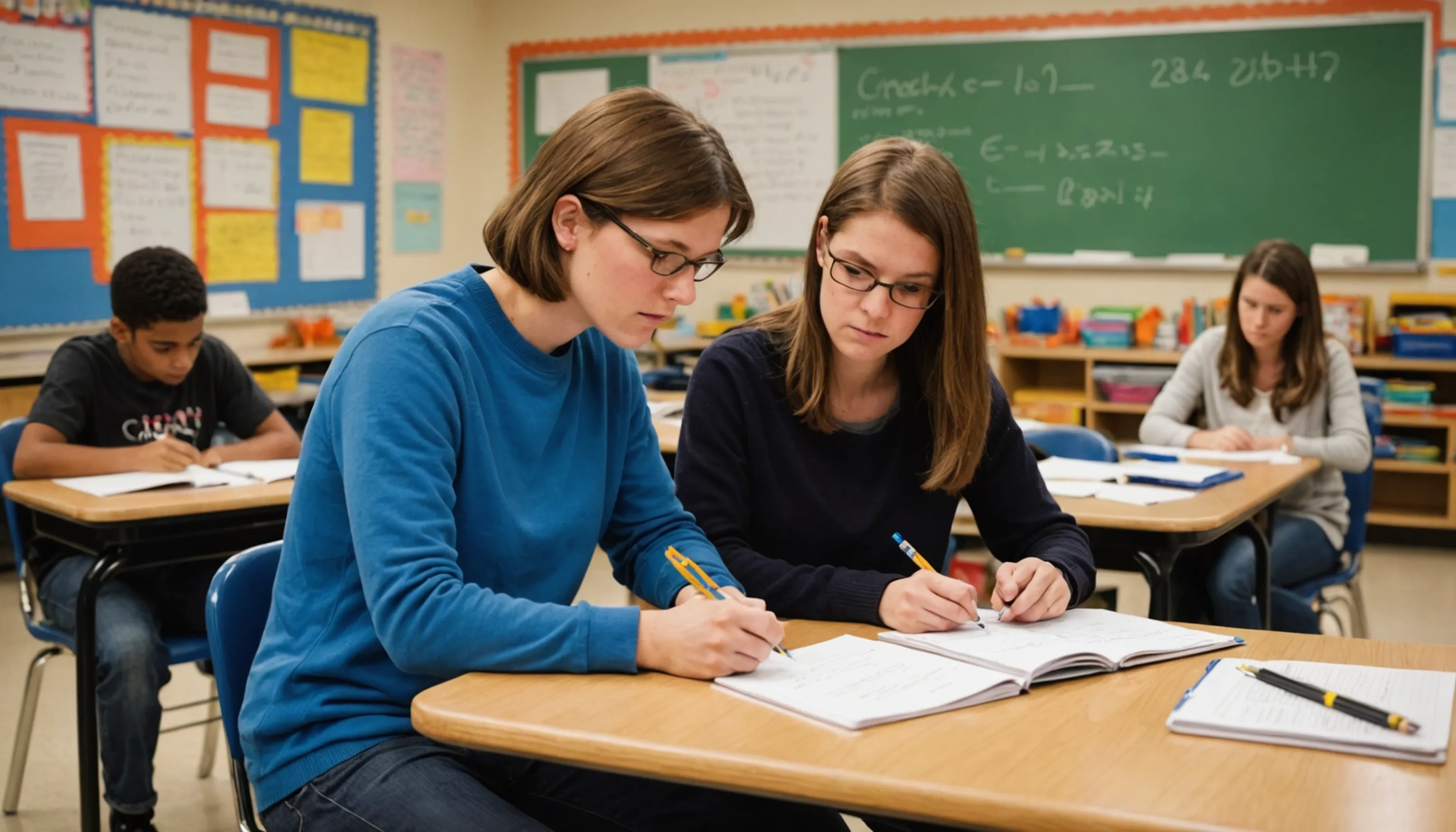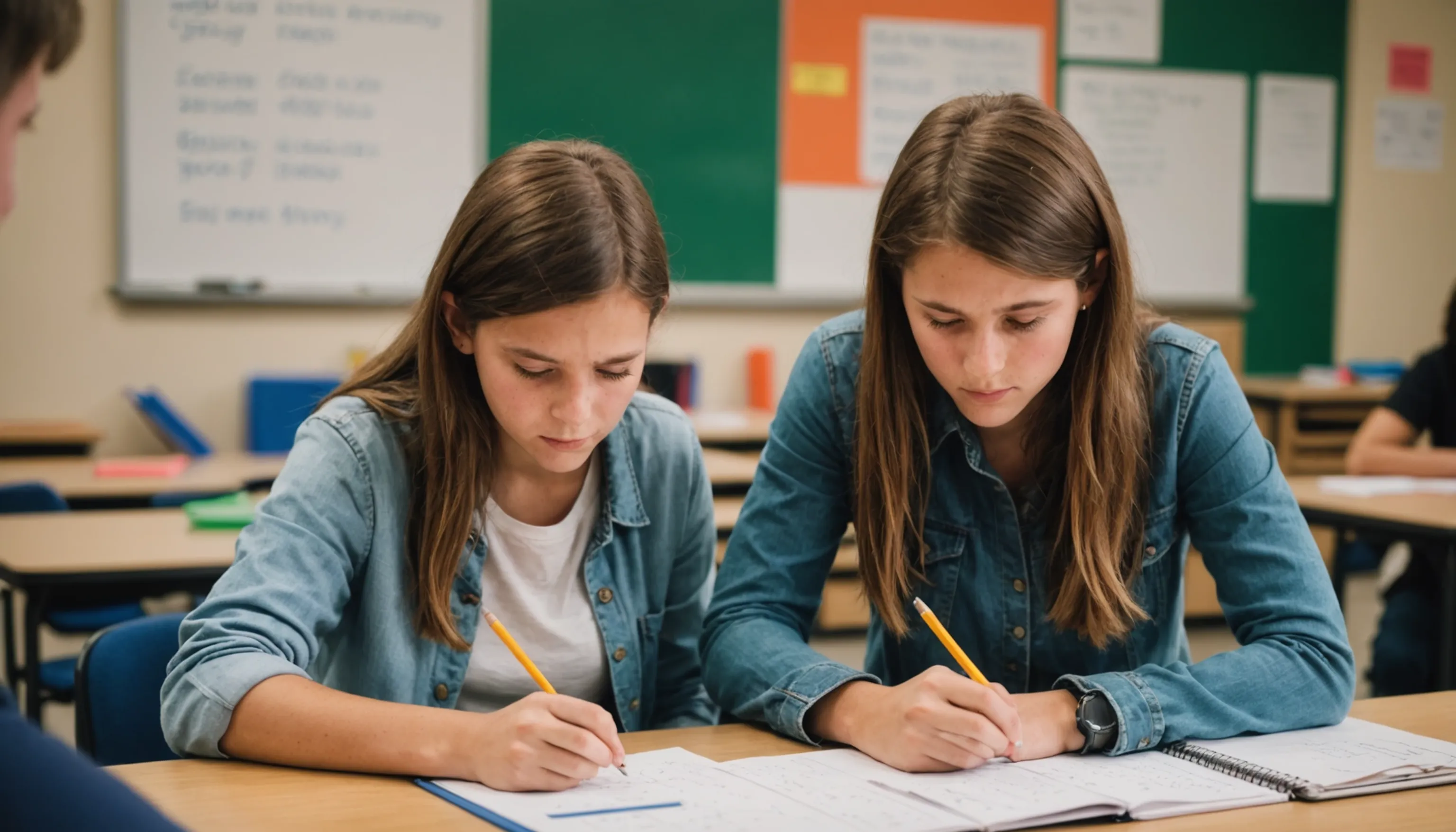Treating Math Anxiety Effectively
 HvWHenry van Wagenberg
HvWHenry van Wagenberg
Effective Strategies to Treat Math Anxiety
Treating math anxiety involves various effective strategies that can help teenagers overcome their fears. First, it’s crucial to foster a supportive environment where students feel safe to express their concerns about math. This can be achieved by encouraging open discussions and validating their feelings.
Another effective strategy is to employ positive reinforcement by celebrating small victories. Setting realistic goals helps students build confidence gradually. Lastly, incorporating fun activities like math games can make learning enjoyable and less intimidating, allowing students to practice math skills in a stress-free way.
Understanding Math Anxiety
Math anxiety is a prevalent issue among teenagers, affecting their performance and confidence in mathematics. It manifests as a feeling of tension and fear that can disrupt their ability to engage with math-related tasks. Understanding the root causes of this anxiety is essential for parents and teachers who aim to support their children effectively.
One common cause of math anxiety is the fear of failure. Many teenagers believe that they must achieve perfection in math, leading to immense pressure. This fear can stem from past negative experiences in math classes, such as poor grades or unsupportive comments from peers or instructors. As a result, they may start avoiding math altogether, creating a cycle of anxiety and underperformance.
Another contributing factor is the way math is often taught. Traditional methods can sometimes neglect the diverse learning styles of students, making it hard for some to grasp concepts. When students feel lost or overwhelmed, anxiety can develop. Furthermore, societal attitudes towards math, often viewed as a difficult subject, can also reinforce the belief that it's okay to struggle with it.
It's crucial to recognize that math anxiety is not merely a lack of ability; it’s a psychological barrier that can be addressed. By understanding its origins, parents and educators can implement strategies to help students build confidence and reduce anxiety, paving the way for a more positive relationship with mathematics.

Signs of Math Anxiety in Teenagers
Recognizing the signs of math anxiety in teenagers is crucial for parents and educators to provide timely support. One of the most common indicators is a pronounced fear or avoidance of math-related tasks. Teenagers may express reluctance to attend math classes or participate in math activities, often making excuses to escape situations involving math.
Another sign is physical symptoms such as sweating, rapid heartbeat, or stomachaches when faced with math assignments or exams. These physiological responses can be alarming and indicate a high level of stress. Additionally, teenagers may exhibit negative self-talk, expressing feelings of inadequacy or believing they are "bad" at math, which can further exacerbate their anxiety.
Academic performance can also reveal signs of math anxiety. Students who previously performed well may suddenly struggle with grades, leading to a drop in confidence. They might rush through math problems or avoid completing homework, fearing failure. Furthermore, procrastination is a common behavior among anxious students, as they may delay starting assignments due to overwhelming feelings associated with math.
Emotional signs can include irritability, frustration, or sadness when discussing math topics. It's essential to pay attention to these signs, as they can impact a teenager's overall academic experience and self-esteem. By identifying these symptoms early, parents and educators can implement strategies to help alleviate math anxiety, fostering a healthier relationship with the subject.
Creating a Supportive Environment
Creating a supportive environment is essential for helping teenagers overcome math anxiety. Start by fostering open communication, encouraging students to express their feelings and concerns about math without fear of judgment. This reassurance helps build trust and confidence.
Moreover, provide positive reinforcement by celebrating their efforts and progress, no matter how small. Consider creating a collaborative learning space where peers can work together, share ideas, and help each other. Finally, ensure that resources, such as tutoring or online tools, are easily accessible to support their learning journey. A nurturing environment can significantly reduce math anxiety.

Encouraging Positive Mindset
Encouraging a positive mindset is crucial for helping teenagers overcome math anxiety. A growth mindset, which emphasizes that abilities can be developed through effort and practice, can significantly alter how students perceive their mathematical capabilities. Parents and teachers can promote this mindset by praising effort rather than innate talent. For instance, acknowledging the hard work a student puts into solving a challenging math problem encourages them to see value in perseverance.
Another effective strategy is to normalize mistakes as part of the learning process. Emphasizing that everyone makes errors and that these mistakes are opportunities for growth can help reduce the fear of failure. This approach can be reinforced through classroom discussions where students share their experiences with math challenges and how they overcame them.
Moreover, incorporating positive affirmations into daily routines can boost self-esteem. Simple statements like "I can learn math" or "I am improving every day" can help reshape negative thought patterns. Visualization techniques can also be beneficial; encouraging students to visualize themselves succeeding in math can enhance their confidence.
Finally, integrating math into fun and engaging activities, such as games or real-life applications, makes learning enjoyable and less intimidating. By creating an environment where students feel empowered and supported, they are more likely to develop a positive attitude towards math, ultimately reducing anxiety and enhancing their overall performance.
Setting Realistic Goals
Setting realistic goals is vital for helping teenagers manage math anxiety effectively. By establishing achievable objectives, students can build confidence and a sense of accomplishment, which is essential in combating anxiety. The process begins with understanding each student's current abilities and identifying specific areas of improvement.
Start by breaking down larger goals into smaller, manageable tasks. For example, instead of aiming to ace an entire math exam, encourage students to focus on mastering one chapter or concept at a time. This gradual approach reduces overwhelming feelings and allows students to celebrate small victories along the way.
In addition, it’s essential to involve students in the goal-setting process. Encourage them to set their own academic targets based on their interests and strengths. This involvement fosters a sense of ownership and commitment, making them more likely to work towards these goals.
Moreover, incorporating a timeline can help students stay organized and focused. Setting deadlines for each small task encourages accountability and provides a clear path to success. Regular check-ins to assess progress can also be beneficial, as they allow for adjustments to be made if needed. It's important to praise efforts and progress, reinforcing the idea that improvement takes time and persistence.
By setting realistic goals, students can approach math with a more positive mindset, reducing anxiety and enhancing their overall learning experience.
Practicing Math in a Stress-Free Way
Practicing math in a stress-free way is essential for teenagers struggling with math anxiety. One effective method is to incorporate games and interactive activities that make learning enjoyable. Using math-related board games or online platforms can transform practice into a fun experience.
Additionally, setting aside a calm, distraction-free space for study can help students focus better. Encourage short, frequent practice sessions instead of long, overwhelming study marathons. Finally, integrating real-life applications, like budgeting or cooking, allows students to see the relevance of math in everyday life, reducing anxiety and fostering a positive attitude.
Using Games and Fun Activities
Using games and fun activities is an excellent way to alleviate math anxiety in teenagers while making learning enjoyable. Engaging students in playful learning experiences helps them view math as a less intimidating subject. There are various ways to incorporate games into math practice effectively.
Board games like Monopoly or Yahtzee naturally integrate math skills such as counting, addition, and probability, allowing students to practice in a relaxed setting. Furthermore, online math games and apps provide interactive platforms where students can solve problems and compete in a fun environment, often without realizing they are learning.
Another effective approach is using math scavenger hunts. This activity involves creating a list of math-related tasks or problems that students must solve while exploring their environment. This not only encourages teamwork but also allows students to apply math concepts in real-world situations.
Incorporating technology, such as educational math videos or interactive simulations, can also enhance engagement. Many students respond positively to visual and auditory stimuli, making lessons more relatable and memorable.
Lastly, consider organizing math-themed events, such as math fairs or competitions. These events can foster a sense of community, allowing students to showcase their skills while receiving encouragement from peers and mentors. By utilizing games and fun activities, educators can create a supportive atmosphere that reduces anxiety and promotes a love for math.
Incorporating Real-Life Math Applications
Incorporating real-life math applications into learning can significantly reduce math anxiety among teenagers. Connecting math concepts to everyday situations makes the subject more relatable and less intimidating. Here are several effective strategies to integrate real-life math applications:
- Budgeting and Financial Literacy: Teach students how to create a personal budget, explaining income, expenses, and savings. This practical approach helps them understand percentages, addition, and subtraction in a context they can relate to.
- Cooking and Baking: Use recipes to explore fractions, measurements, and proportions. Students can practice converting units and adjusting recipes for different serving sizes, making math tangible and enjoyable.
- Shopping and Discounts: Engage students in calculating discounts during shopping trips. Discussing sales tax and total costs can help them practice addition and multiplication while understanding real-world financial implications.
- Sports Statistics: Analyze player statistics or game scores. Encourage students to calculate averages or probabilities related to their favorite sports, making math relevant to their interests.
- Home Projects: Involve students in planning home improvement tasks, such as measuring space for furniture or calculating paint needed for a room. This hands-on experience reinforces geometry and measurement concepts.
By actively incorporating these real-life applications, students can see the value of math in their daily lives. This practical approach reduces anxiety, builds confidence, and fosters a positive attitude towards learning mathematics.
